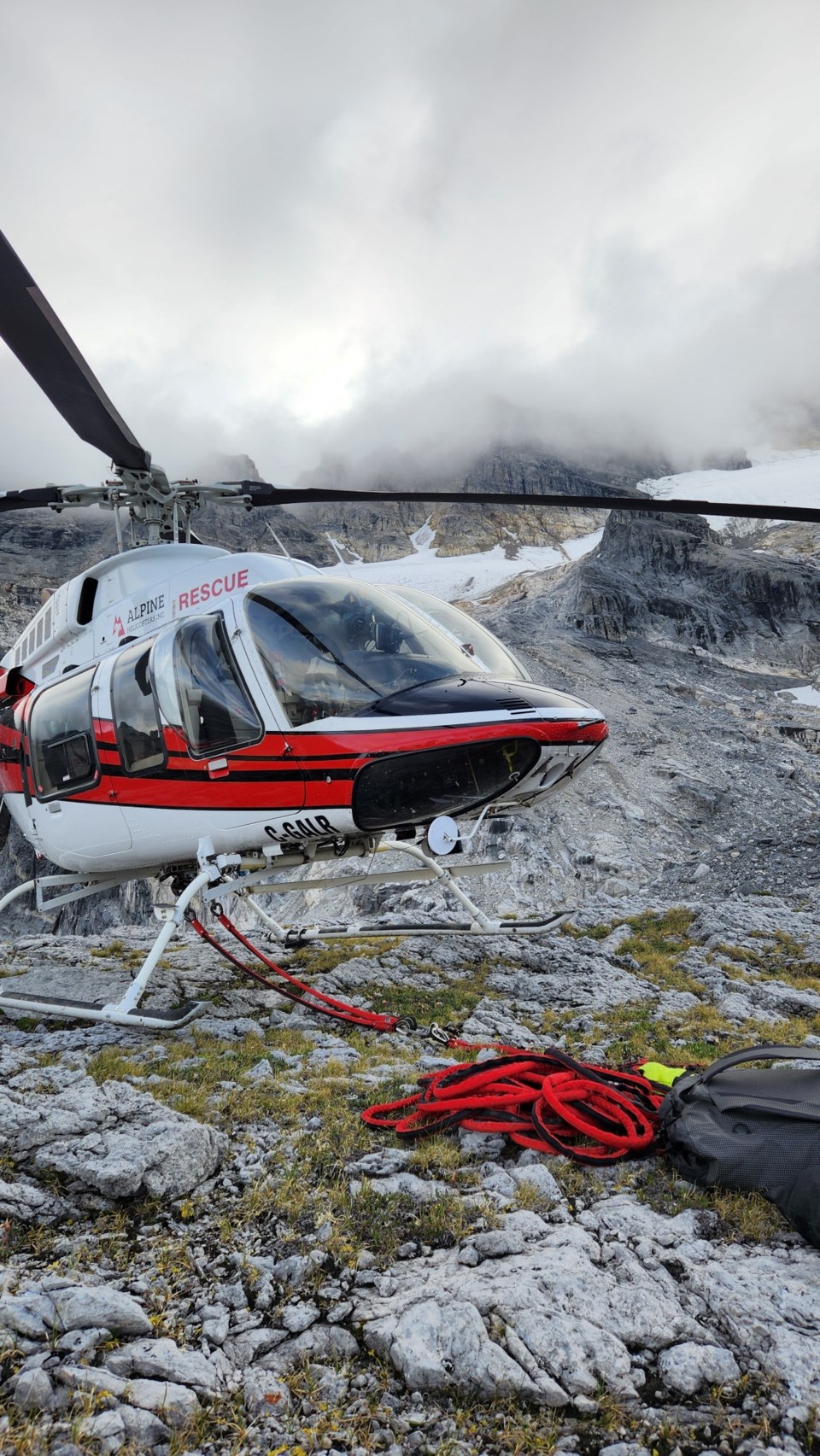LAKE LOUISE – A powerful storm thwarted rescue efforts of three experienced climbers stuck on Howse Peak in Banff National Park at the end of August, leaving them stranded near the summit of the 10,810-foot mountain for a few nights.
Parks Canada’s dispatch received a satellite communicator SOS on Saturday morning (Aug. 24) from climbers who had tackled the Northeast Buttress, a technical, multi-day alpine climb on Howse Peak, located about five kms west of the Icefields Parkway above Chephren Lake.
Rescuers say the climbers had made the summit in the dark the night before, on Friday (Aug. 23), but couldn't descend because of a severe storm that struck region in the early evening, bringing snow, rain, wind and lightning.
Grant Statham, a visitor safety specialist for Banff, Yoho and Kootenay national parks, said it was a “violent thunder and lightning storm” and noted the climbers described it as “terrifying.”
“It was a big electrical storm. Their hair was standing up, everything was buzzing. One guy described his moustache as buzzing,” Statham said.
“I think it was really frightening.”
When the lightning began, Statham said the trio were quick to pull off all their metal climbing gear and hung it a distance away.
Statham said there was a short break in the weather, enough for the climbers to to get to the summit in the dark.
He said the climbers ended up bivouacking below the summit for the rest of the night as the storm raged on.
”It was still storming out and they couldn’t see anything,” he said.
“They had all the right equipment and they climbed under a tarp and kind of hunkered down and spent the rest of the night.”
The dramatic storm continued into Saturday morning and that was when the climbers put in the call for help.
Rescuers were quick to respond, however the ongoing poor weather thwarted the day-long efforts with visitor safety specialists and an Alpine Helicopters pilot to get them off the mountain.
“It was not too bad in the valley, but the summit of Howse Peak was just wrapped in this big, really kind of turbulent cloud and it just wouldn’t allow us to get in there,” Statham said.
“It would clear and we could see things briefly, and then it would close off and it would be really, really difficult to get near it with the helicopter.”
As the storm tapered off temporarily, rescuers were able to drop a bag of supplies to the climbers from a helicopter on Sunday (Aug. 25) – camping gear, warm clothes and food.
“We were able to drop them a bag of equipment – there was camping gear and extra warm clothing and food and all the stuff they would need to continue to survive up there,” Statham said.
Another break in the weather later on Sunday allowed rescuers and Alpine Helicopters to extract one person by helicopter sling, but Statham said poor flying conditions returned and the remaining two climbers could not be reached that day.
He said the two climbers spent a third night near the summit with the additional supplies dropped to them, and by Monday morning, they seemed to be in better condition and stronger spirits.
During a slight improvement in the weather, he said they were able to descend the glacier on Howse Peak, and were met by the rescue team and flown uninjured by Alpine Helicopters to their vehicles.
“They had quite a bit of energy now because we had delivered them some food and a tent the day before, so now they were rested, had dry clothing and had some energy,” Statham said.
“I think everybody realized they’re going to have to walk off this thing no matter what… it took them a couple hours to get down to a location where we could pick them up with a helicopter.”.
Statham said the climbers on Howse Peak were experienced and well-equipped, but there are always lessons to be learned.
He said this storm was in the weather forecast and a group of two climbers is always going to be faster than a group of three on a technical route such as this.
“If you’re looking at something and you think, ‘OK, I got a tight weather window here, I've only got 48 hours before the weather changes’, the choice of going with a group of two is going to be faster than with a group of three,” he said.
“I think that’s a pretty good message for any climber.”
From June 1 to Sept. 10, Parks Canada has received 128 calls for help and rescuers have responded to 64 of those.
The storm that delayed rescue on Howse Peak was the same storm that left two climbers stranded at about 9,500 feet on the 10,160-foot Mount Birdwood in Kananaskis Country for two cold nights after a rope became stuck while rappelling on their descent. Kananaskis Mountain Rescue mounted that rescue.




